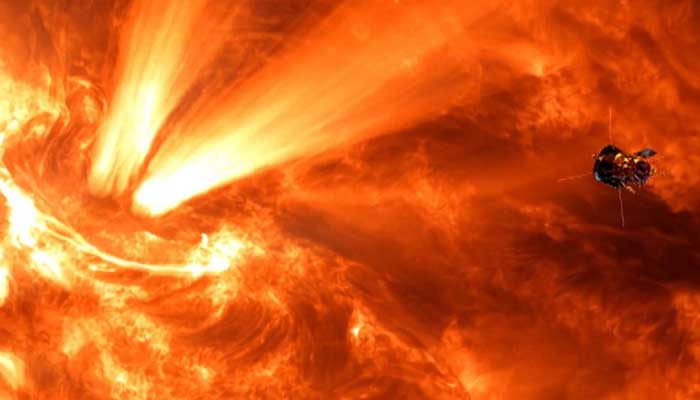US
Nasa spacecraft set to make closest-ever approach to Sun today
字号+ Author:Smart News Source:Health 2025-01-15 07:45:47 I want to comment(0)
A Nasa spacecraft is set to make history on Christmas Eve as it poised to make its closest-ever approach to the Sun, a record-setting 6.2 million kilometres from the surface. Launched in August 2018, the agency's pioneering Parker Solar Probe is on a seven-year mission to deepen scientific understanding of our star and help forecast space-weather events that can affect life on Earth. Its closest approach to date will happen on Tuesday, December 24, at 4:53am local time (11:53 GMT). If the distance between Earth and the Sun is equivalent to the length of an American football field, the spacecraft would be about four yards (metres) from the end zone at that point. "This is one example of Nasa's bold missions, doing something that no one else has ever done before to answer longstanding questions about our universe," said Arik Posner, Parker Solar Probe program scientist, in a statement. "We can't wait to receive that first status update from the spacecraft and start receiving the science data in the coming weeks." During this closest approach — known as perihelion — mission teams will lose direct contact with Parker, relying on a "beacon tone" this Friday to confirm the spacecraft's status. Although the heat shield will endure scorching temperatures of about 870 to 930°C, the probe's internal instruments will remain near room temperature — 29°C — as it explores the Sun's outer atmosphere, called the corona. Not only will the temperatures be extreme, but Parker will also be moving at a blistering pace of around 690,000 kph, fast enough to fly from the US capital Washington to Tokyo in under a minute. "No human-made object has ever passed this close to a star, so Parker will truly be returning data from uncharted territory," said Nick Pinkine, Parker Solar Probe mission operations manager at the Johns Hopkins Applied Physics Laboratory (APL) in Laurel, Maryland. "We're excited to hear back from the spacecraft when it swings back around the Sun." By venturing into these extreme conditions, Parker has been helping scientists tackle some of the Sun's biggest mysteries: how the solar wind originates, why the corona is hotter than the surface below, and how coronal mass ejections — massive clouds of plasma that hurl through space — are formed. This Christmas Eve flyby is the first of three record-setting close passes, with the next two — on March 22, 2025, and June 19, 2025 — both expected to bring Parker Solar Probe back to a similarly close distance from the Sun.
1.This site adheres to industry standards, and any reposted articles will clearly indicate the author and source;
 Related Articles
Related Articles-
Another Pakistani man kills himself while shooting TikTok
2025-01-15 07:21
-
Plea against Accountability Ord Amendment disposed of
2025-01-15 06:21
-
Medical college in Quetta closed for two weeks after students clash
2025-01-15 05:45
-
Rejuvenated Medvedev back on track with victory over De Minaur
2025-01-15 05:28
 User Reviews
User Reviews Recommended Reads
Recommended Reads Hot Information
Hot Information- Latest update on issuance of arms license in Punjab
- Hezbollah claims string of drone and rocket attacks in northern Israel
- Shaheens, Sri Lanka ‘A’ four-dayer poised for exciting finish
- RUNNING: MARATHON MEN (AND WOMEN)
- Students back to school as educational institutions reopen in Punjab after Winter Holidays
- Alcaraz beats Rublev to open ATP Finals account
- Israeli army destroying ‘whole neighbourhoods’ in north Gaza: report
- Palestinian ambassador visits UHS
- “Dhee Rani Program” launched: Maryam Nawaz celebrates 51 weddings in Lahore
 Abont US
Abont US
Follow our WhatasApp account to stay updated with the latest exciting content













